Categories
Latest Updates
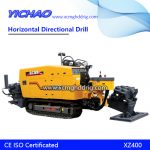
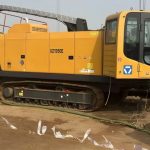
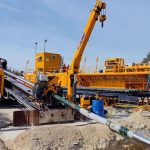
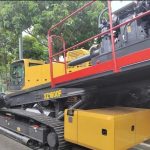
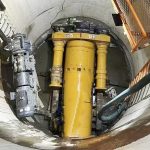
As early as around 1600 AD, there were bamboo brine pipes crossing rivers in Sichuan, China. In 1888, the United States used buoys to lay underwater pipelines. Directional drilling pipe laying technology is an advanced pipe laying technology developed abroad in the 1980s. This technology is an advanced non-excavation technology widely used internationally. It uses directional drilling under the soil layer and an oblique pulling process to complete the pipe laying project without excavating the road surface. It is not necessary to excavate the pipe jacking machine pit like the previous pipe jacking. It has the characteristics of high work efficiency and low cost, and it has been widely adopted abroad. Now it can be widely used in the construction of pipelines for municipal administration, telecommunications, electricity, gas, water supply, etc. It entered China in the late 1990s. In the trenchless technology industry, directional drilling has been the main growth area. At present, directional drilling is a common construction technology in the natural gas, tap water, power and telecommunications sectors. Recently, due to the improvement in construction accuracy, directional drilling has also been used for laying sewage pipes and other gravity pipelines. Directional drilling only needs to excavate two working pits of 2×1m square at both ends of the section where the pipeline is to be laid. The pilot holes are drilled between the two working pits through directional drilling, and the pilot holes are expanded back through the reamer. To the required hole diameter, the pipeline to be laid is pulled back from one working pit to another working pit through the expanded hole under the pulling force of the directional drill. As a result, the laying of the pipeline can be completed with only two working pits being excavated. Directional drilling construction method: During the construction, according to the designed drilling trajectory (usually arc), use the directional drilling technology to first construct an approximately horizontal pilot hole, and then switch to a large-diameter reaming drill bit at the end of the drill pipe. The pipeline to be laid with a diameter smaller than the reaming drill bit is pulled back to expand the hole, and the pipeline to be laid is pulled into the borehole to complete the pipe laying operation. Sometimes, depending on the capacity of the drilling rig and the diameter of the pipeline to be laid, the pipeline can be pulled back after the first or second reaming is carried out. The drilling trajectory can be straight or gradually curved. When steering around obstacles, or crossing highways, rivers and railways, the direction of the drill bit can be adjusted. The drilling process can be carried out between the pre-dug launch pit and the receiving pit, or it can be drilled directly from the surface at a small angle at the site where the drilling rig is installed. The laying of work pipes or conduits is usually carried out in two steps. The first is to drill pilot holes along the required trajectory, and then expand the hole to enlarge the hole diameter to meet the requirements of the working pipe. In the second step, the dragging process, the working pipe is connected to the reamer through a rotary joint, and is pulled into the enlarged borehole with the dragging of the drill rod. Under complex stratum conditions, or when the pore size needs to be increased greatly, a multi-stage reaming method can be used to gradually expand the pore size. In large equipment, most of the work is done through the rotation of the drill pipe, and the torque of the equipment is as important as the axial feed force and the drag force. For small equipment, usually a pilot hole is drilled first, and then the diameter is enlarged to the required size, and the pipe is pulled in with the reamer. At this time, the use of drilling fluid helps to break the rock, lubricate and cool the drill bit. When drilling into rock or other hard formations, drilling fluid can also be used to drive the “mud motor” at the bottom of the hole. In this case, a high drilling fluid flow rate is required. The bentonite/water mixture is a commonly used drilling fluid or “mud”, which can make the carried cuttings in suspension and can be filtered through the circulation system. After the completion of the pilot hole construction, the thixotropic mud can maintain the stability of the hole wall to facilitate back expansion. Working pipes or conduits are generally polyethylene pipes or steel pipes, which are picked up after the reamer while reaming. Some drilling systems are designed for dry drilling processes without water or drilling fluids. They are simpler to operate, have less waste, and do not require too much on-site equipment; however, they are limited by the size of the pipe and the formation conditions. Drilling rigs can be roughly divided into two categories: surface-launched and pit-launched. Surface launching rigs are usually crawler-type, which can enter the construction site by themselves on their own power. They do not need launch pits and receiving pits when laying new pipes, but they still need to be excavated when the pipelines are connected. If it is required to connect other pipelines at the same depth underground, the first few meters of the new pipeline may be discarded. In-pit launching rigs need to dig pits at both ends of the borehole, but they can be operated in places with limited space. The launch pits of some more compact rigs can be only slightly larger than the pits needed to take over. The length of a single drill pipe is limited by the size of the pit, which may affect the laying speed and the cost of the drill pipe. Depending on the type of formation being drilled, the ability to choose a directional drilling rig can vary greatly. Generally, homogeneous clay formations are the easiest to drill; sandy soils are more difficult, especially when they are below the groundwater level or have no self-stabilization ability; drilling in gravel layers will accelerate the wear of the drill bit. Standard drilling rigs without impact action or mud motors are generally not suitable for drilling into rocks or hard interlayers, because once such obstacles are encountered, the drill bit will not be able to advance or deviate from the designed trajectory. The crossing technology of Wujiang River is an important factor to improve the technical level of pipeline construction. The large-scale horizontal directional drill crossing machine successfully solved the problem of long-distance pipeline crossing river and river construction. For example, the Qinhe directional drilling crossing project at the junction of Wenxian and Bo’ai County, Henan Province has a total length of 1136.15 meters and a penetration depth of 22 meters. It has the worst geological conditions and the longest crossing distance in the West-East Gas Pipeline Crossing Project. , The most difficult and risky river crossing for construction. The pipeline construction operation was carried out from the world’s largest DD-990 horizontal directional drilling rig. After nearly a month’s day and night battles, steel pipes weighing more than 800 tons were pulled out of the 22-meter-deep stratum and connected to the main West-East Gas Pipeline. . The advantages of the horizontal traversal of the excavation of the directional drill are that it can easily reach the designed burying depth, the anti-corrosion layer is not easy to be destroyed, can guarantee the service life, does not change the geological structure of the river bed, does not damage the topography of the embankment and both banks, and does not affect the normal shipping It is the most popular non-polluting and environmentally friendly crossing method in the world today, with short construction period and low cost.
